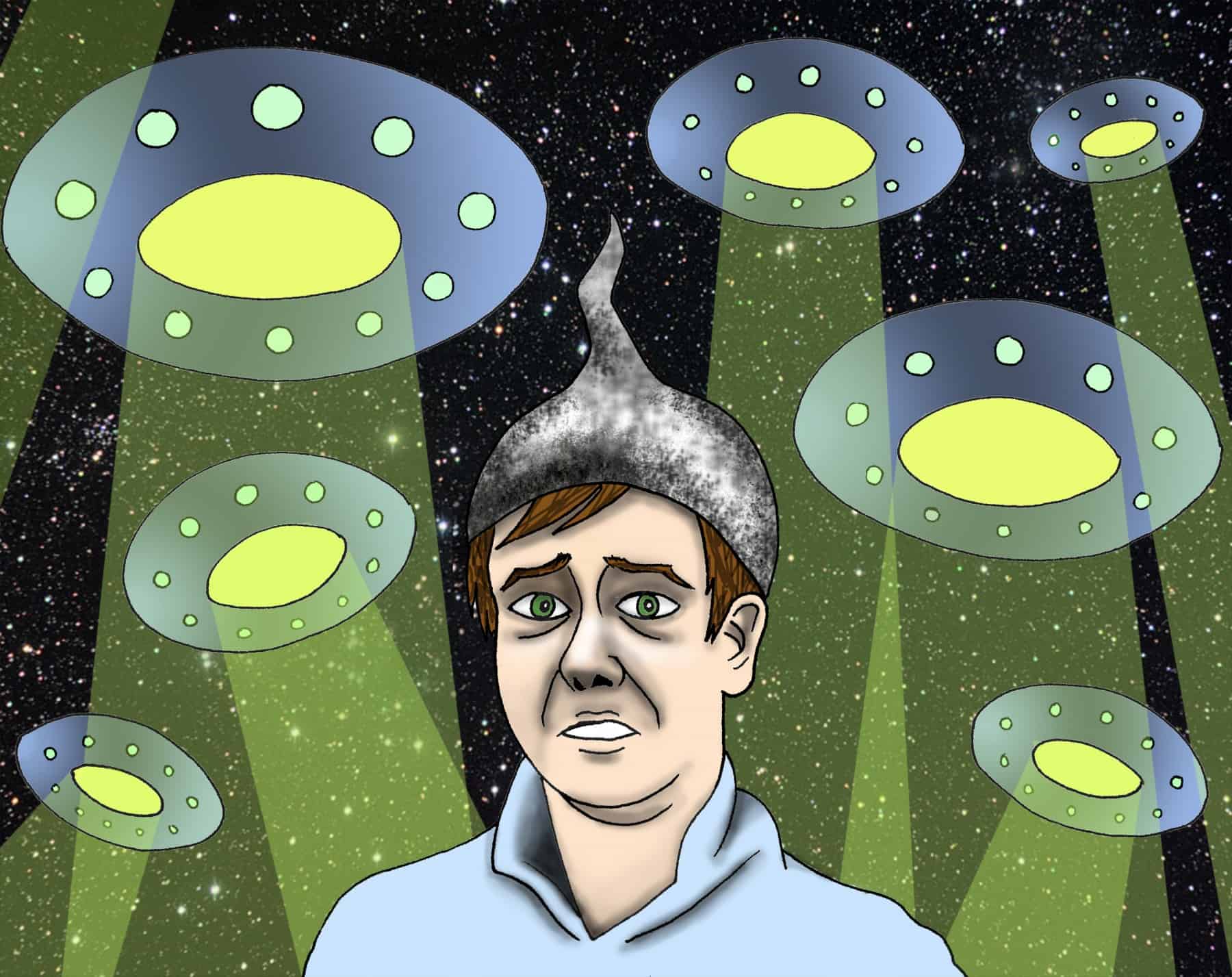Besides battling against COVID-19 infections, the world is also experiencing a global misinformation pandemic. From claims that the virus is spreading through 5G mobile networks to dismissals of the existence of COVID-19 altogether, there is no shortage of conspiracy theories circulating on the internet. Most surprisingly, people believe in these unfounded theories to an extent that fosters distrust in science. Some even take to the streets to protest against public health safety measures imposed by governments around the world.
To investigate the inner workings of COVID-19 conspiracy theories, The Varsity turned to Professor Steve Joordens from the Department of Psychology at UTSC, who is an expert in connecting psychology to world events.
Why are conspiracies thriving during the pandemic?
Joordens pointed out that conspiracy theories are always around — and they even turn out to be correct sometimes. What makes a conspiracy theory dangerous is its capability to manipulate and respond to human emotion. Prolonged exposure to the threat of COVID-19 infection easily triggers very primitive emotional reactions associated with existential threats. Joordens said, “When we’re anxious, we feel like we have to do something, and what can make anxiety a little extra bad… is when we feel the need to do something but we don’t know what to do.”
Conspiracies, under emotionally appealing disguises, serve as a call to action to those who have trouble handling their feelings of anxiety. If someone feeds that pre-existing anxiety and presents a course of action, people “suddenly have a release valve… something [to] channel [their] efforts towards,” Joordens said.
Another appealing aspect of conspiracy theories, especially during periods of isolation, is that they provide a sense of community. These communities welcome anyone who agrees with their conspiracy beliefs with open arms. One suddenly goes from feeling alienated to being a part of a group of very devoted believers. Joordens noted that this sense of belonging can be very powerful to those who aren’t a part of a community in other aspects of their lives.
The power of misinformation
Many of the so-called “anti-vaxxers” are concerned that the pharmaceutical industry is plotting to have the general public be dependent on drugs to generate more profit. In 1999, a fraudulent study was published in The Lancet, linking vaccines to autism. The paper “was almost immediately completely debunked and attacked. It was really bad science on multiple levels,” said Joordens, but the damage was already done. The paper sparked the notion of vaccines potentially having negative effects in humans.
Conspiracy theories activate the limbic system — the part of the brain that regulates emotions — which shuts down the frontal lobes that are responsible for rational reasoning. The emotional stimulation compels people to share and spread conspiracies even more broadly. Therefore, widely shared social media articles tend to make their readers hyper-emotional from the very beginning.
The original paper was shared a lot more than the evidence that discredited its erroneous claims. The sharing of false information caused a kind of paranoia that laid the foundation for COVID-19 anti-vaccination campaigns. Joordens described such a phenomenon as “mere exposure effect.” Regardless of the credibility of the information one receives, Joordens explained that the more one sees or hears of it, the more that information seems true.
Tackling the spread of conspiracies
Transparency in disclosing both positive and negative information to the general public is influential both in the short- and long-term acceptance of COVID-19 vaccines. If negative side effects are hidden from the public, “it only takes one person to show one reliable side effect” to encourage the spread of conspiracy beliefs, Joordens commented.
Beyond the context of COVID-19, Joordens emphasized the importance of communicating science to the public. Advancement in science is not driven by pre-existing knowledge only: new data, interpretation, and discoveries are all critical to the vitality of scientific academia. Joordens did address that communicating the most up-to-date findings to the public is difficult, as new information may be interpreted as a change of opinion. Hence, understanding how one’s emotions may hinder one’s own rational thinking, or even be manipulated by others, must be included in public education.
“We have to find a way to get people thinking together better,” said Joordens.


